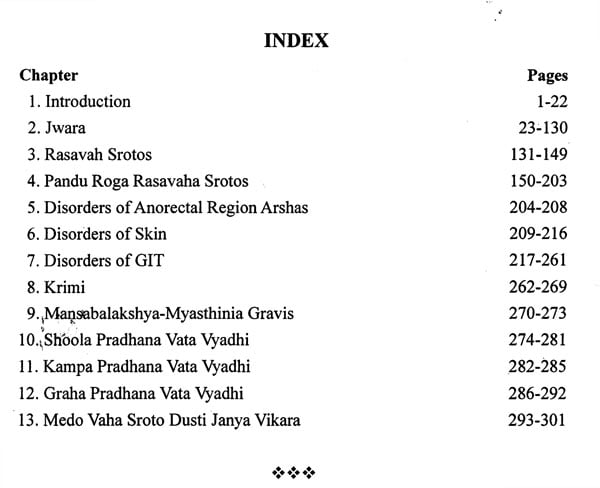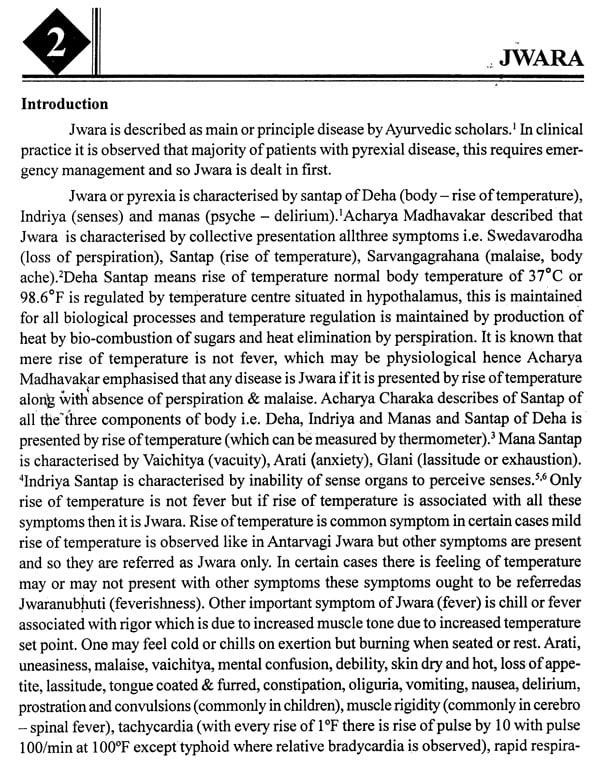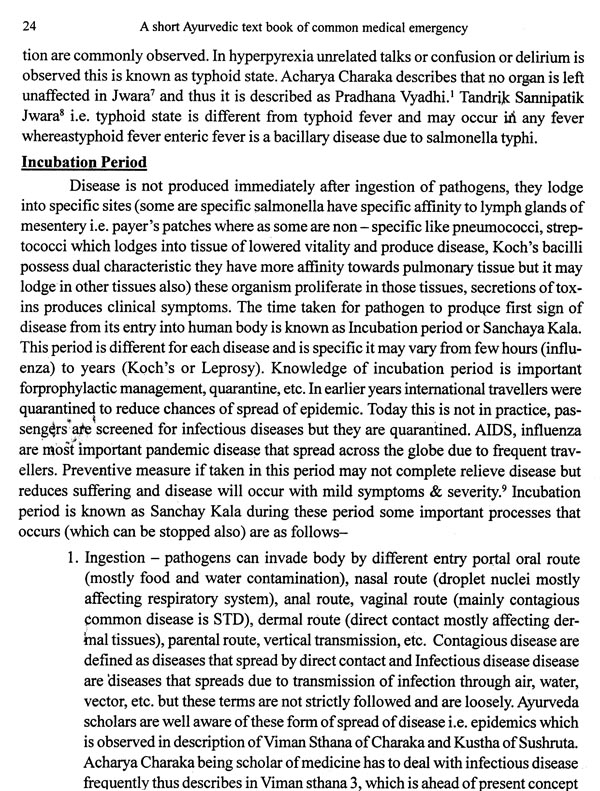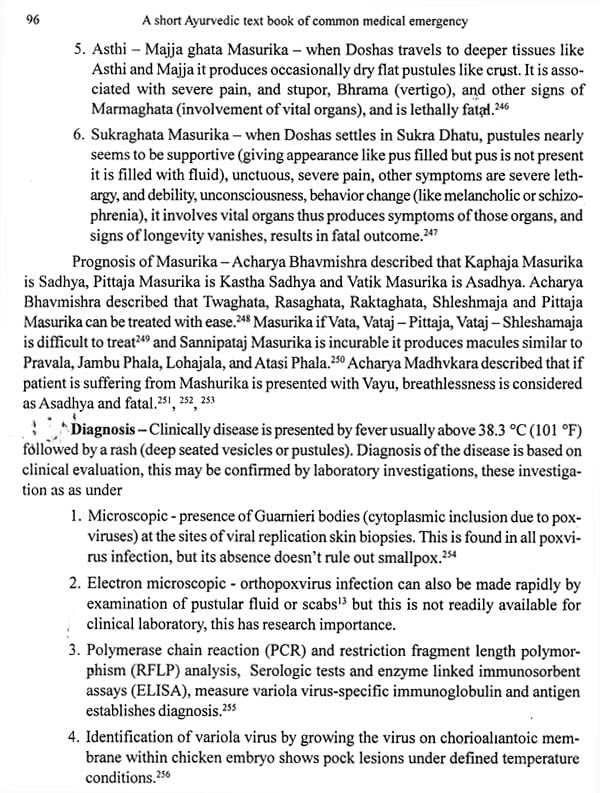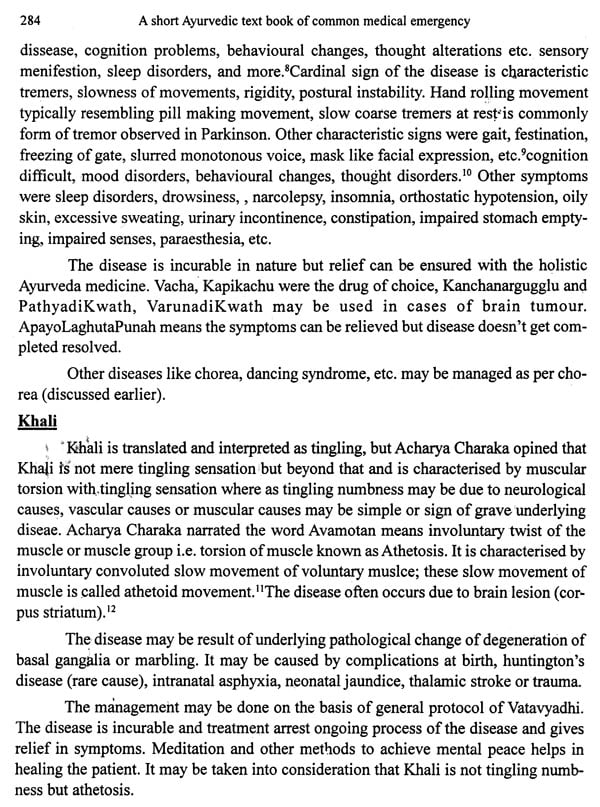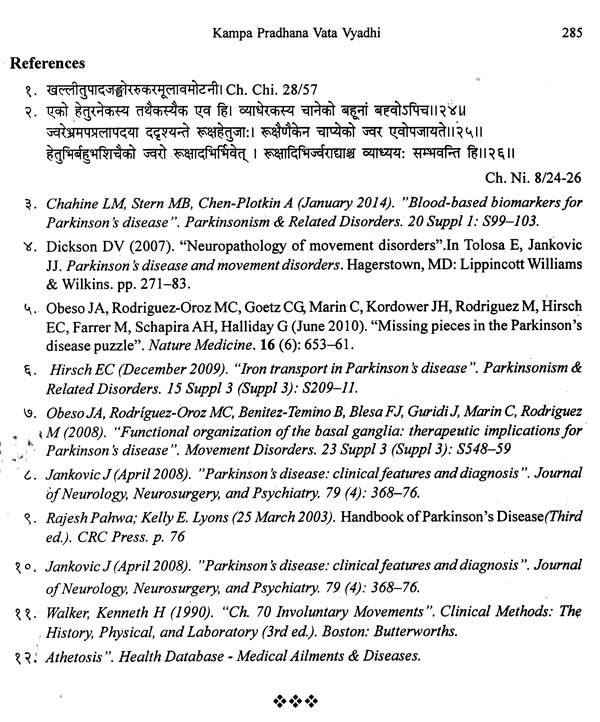
A Short Ayurvedic Text Book of Common Medical Emergency
Book Specification
| Item Code: | NAT605 |
| Author: | Dr. Nishant Shukla |
| Publisher: | Chowkhamba Sanskrit Series Office |
| Language: | SANSKRIT AND ENGLISH |
| Edition: | 2019 |
| ISBN: | 9788170805090 |
| Pages: | 302 |
| Cover: | PAPERBACK |
| Other Details | 9.50 X 7.50 inch |
| Weight | 410 gm |
Book Description
Emergency management through Ayurveda of common medical ailments is the structured thoughts in textual format of renounced Ayurveda scholar, academician, and clinician Lt. Professor Dr. C. P. Shukla. This books highlights about Ayurveda fundamen-tal of managing common medical emergencies - mild and mild to moderate through Ayurveda medicine and therapies. It is a common belief that there is no emergency or prompt care in Ayurveda amongst society; even a group of Ayurveda clinicians opt to prescribe or suggest allopathic management. I am not against allopathy management, the morbidity & mortality rate in infectious disease has drastically reduced, transfusion science proven advantageous in medical conditions like tha lassemia, injuries, chronic dis-eases and operative management. At the same time over use of antibiotics has resulted in infection by resistant strain organisms, which may take us back to days of early twentieth century due to failing antibiotics. Thus there is need of management of patient that not only relief in patient symptoms, but also improve general wellbeing and quality of life. Ayurveda gives importance to Apunarbhava Chikitsa i.e. radical management for long-term relief.
Ancient Ayurveda treatises narrated prompt medical management by the use of medicines, therapeutic procedures (panchakarma), and non-pharmacological procedures. Surgical management not dealt in the book. Sushruta Samhitanarrated surgical management for trauma, injury, pain, war injury, etc. In brief, emergency management practiced since ages in India. The brain washing education made us distrust about our merits and age old knowledge of India and practices of India. In Charaka Samhita one may find numerous medical conditions where prompt management has been described. In this text I had tried to explore the possibilities of managing emergencies with Ayurveda medicine. It is humble attempt only much more has to be done to establish Ayurveda as a parallel system and not mere alternative system. If Ayurveda is to be established in society one needs to work for emergency management also so that patient can gets relief in the symptoms.
It is common belief in the society that emergency treatment, acute and emergencies are treated by modern medical system only, emergency can't be managed by ayurvedic system of medicine, ayurvedic medicine are useful in chronic ailments only and root healing. This belief has no rationale and propagated with vested interest. Infect reality is quite different and has been in ayurvedic classics & treatises, the same has been proved that ayurvedic & herbal drugs are equipotent with modern chemotharaputic agents in various experimental trials. In this book author attempted to enlighten and unmask truth with primary evidences and practical experiences.
Emergency were dealt by doctors even before the advancement of conventional medical system. The question arises whether people in ancient period were suffering from chronic illness only? Are they left to die in case of injury or acute illness? And physician doesn't attend such cases. This is not the truth Acharya Sushruta narrated surgical emergencies and their management and Acharya Charaka described medical emergencies in details. Ayurvedic treatises mentioned SadyaPhaladayiChikitsa (emergency management or quick response treatment). This is based on scientific observation based on extensive research and observations, documented scientifically by ancient scholars. These are unbiased and stand true always. In medieval period Acharya Madhavkar, Acharya Sharangdhar, Acharya Chakradutta, Acharya Bhavmishra and many more de-scribed ODP, pathogenesis of emergency and acute illness. In late 19th century India was ruled by British rule and brain washing education lead to misconceptions regarding all Indian science, culture, language, etc. including Ayurveda. BalkrishnaAmarji Pathak opined in preface of the Gujarati translation of the book PurushaSharir that rulers of medieval period were interested in vigor only and unstable political situations scientific advances in that period has not continued and whatever survived till 19th century was disregarded just to impose western culture. Today medicines have been found to be equipotent with chemotherapeutic counterparts in many experimental researchs. In mid of 20th Acharya Yadavaj iTrikamaji Acharya worked hard to reestablish real glory of Ayurveda and writ-ten and edited more than 150 books including Charaka Samhita &Sushruta Samhita. Texts are the primary evidence and one may plan research and review therapeutic to come up to establish claims with experimental scientific data.
Lack of confidence in Ayurvedic practitioners is due to lack of study and practice especially in dealing with emergency. Acharya Sushruta described that a physician ought to have pratipanmati, Daksha, Shastra nipuna.' Author has dealt medical emergencies successfully with ayurvedic medicines.
European countries esp. UK has done planned strategy to enforce their customs, religion, culture, literature and their media strategically targeted Indian culture, education, knowledge & wisdom, literature etc. They made Indian to believe that Indian culture, science, customs are inferior from them. This resulted in inferiority complex in Indian, this resulted in whatever comes from west is truth and all Indian customs are false. In mid of 1970 when various Yoga Gurus went to Europe and America, demon-strated yoga to them, they studied them experimentally and found to be very effective then different Yoga schools were started in India. Illustrated weekly a popular magazine of that time wrote in the cover story with title Yoga -A mystery or humpback this shows the mind set of Indian about own knowledge & wisdom. We accept whatever said by west is true and what is said in Sanskrit or any Indian is false and is junk only. Complete reform is required for all Indian sciences and specifically to Ayurveda. It is necessary to establish Ayurved as a parallel system of medicine, and extensive research to establish with scientific evidence.
As mentioned earlier emergencies are very well managed in Ayurveda. In ancient treatises one may find different words used as synonyms of emergency viz. Atyayik, Ashukari, Kshiprakari, Daruna, Pidakartar, etc. and emergency management by Twarayajayeta, TwarayaChikitsya, Twaramanchikitsat, Kshripraarrogyadayi, etc. this emphasis that ancient scholars are well aware of acute life threating condition, emergen-cies and their management. Over and above the use of this description, it is advocated that Vaidya ought to be worshiped when he treats acute disease. Similarly a physician treating case of SannipatJwara ought to be felicitated as he has done Dharmpalana.2 Pathogenesis of Acute disease (general consideration) Acharya Charaka in Viman 6 described various classification of disease, amongst them the one is Mrudu and Daruna on the basis of strength of disease.3,41n MruduVyadhis symptoms of disease are mild and managed with ease, whereas DarunaVyadhi abruptly originates, grave in nature, may be even fatal, they may also lead to severe complication & sequel.
Acharya Charaka in Nidan 4 described general consideration of onset of disease that amalgamation of three viz. Nidan, Dosha and Dushya decides the nature of disease. If they amalgamate with all factors, rapidly then acute illness is resulted and vice-versa if they are amalgamated with fraction mild or no illness occurs, this is known as Vikar -Vighat Bhava Abhava.Vikar - VighatAbhava means disease doesn't occur or mild dis-ease with mild symptom occurs, whereas Vikar - Vighat Bhava means Nidan, Dosha and Dushya amalgamate very rapidly so that severe, acute illness with all symptoms occurs.5,6 occurrence and non-occurrence of disease doesn't only depends on etiological factors but interaction of body tissues and etiological factors. If they don't interact disease doesn't occurs, if interacts after long time or incompletely mild disease or subclinical illness occurs, clinical manifestation may not occur. If they interact completely grave disease occurs, if they interact very rapidly acute illness occurs.
**Contents and Sample Pages**
